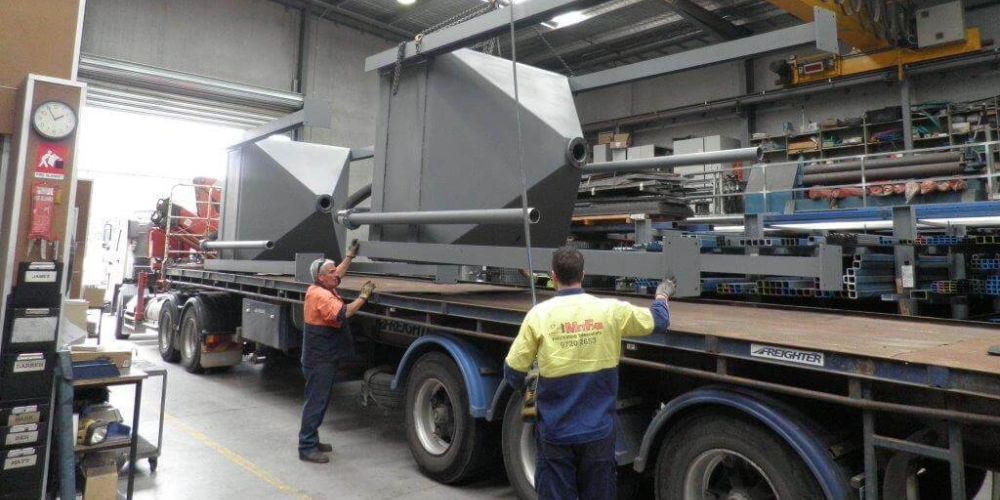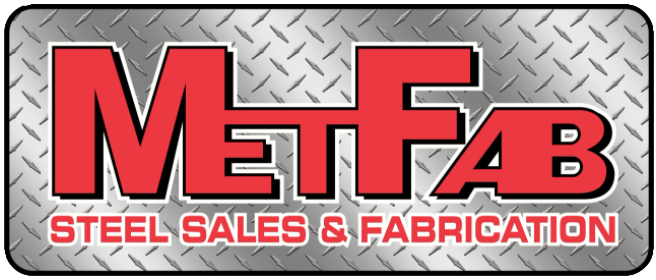Quality Control in Metal Fabrication: Why is it Important and How To Do It Right?
The crucial process of metal fabrication shapes our modern world. It has been always the foundation of all the amazing structures and metal products that have been very useful in making life easier. But regardless of the final product, checking the quality is essential to guarantee its dependability, safety, and aesthetic appeal. However, regardless of the ultimate result, quality control is essential to assure its dependability, safety, and attractiveness.
Quality control is vital in meta fabrication and must be considered. It not only ensures the quality of the finished product, but it also saves money by reducing waste and rework, increases client satisfaction, and ensures compliance with regulatory standards.
As a seasoned metal fabricator, I've witnessed firsthand the transformative power of meticulous quality control practices.
In this post, we will discuss the advantages of having quality control in metal fabrication and best practices to ensure an efficient quality control strategy.
Why is Quality Control in Metal Fabrication Important?
Quality control in metal fabrication refers to the systematic process of ensuring that the products meet or surpass the intended quality requirements. This process entails examining and testing raw materials, monitoring and managing the production process and performing final inspections to ensure the quality of the result. Quality control assists in detecting and preventing faults before they become more severe and ensures that the final product satisfies client expectations. Reflecting on my experiences, I've come to understand that quality control isn't just about meeting standards; it's about surpassing expectations. It's about instilling confidence in our clients, knowing that every product bears the mark of craftsmanship and reliability.
Improved quality of products
Putting a quality control system in metal fabrication helps guarantee that finished goods meet or surpass the intended quality standards. Programmes for quality control monitor and confirm the standard of the raw materials used, the manufacturing process, and the completed goods.
Companies may improve their reputations and boost consumer satisfaction by maintaining high product standards. Customers can return and do business with the firm again if the things they receive match or surpass their expectations. Increased client loyalty, favourable word-of-mouth marketing, and eventually higher corporate profitability are the benefits of this.
By upholding impeccable standards, we cultivate enduring relationships built on reliability and excellence.
Increased client satisfaction
Enhancing customer happiness and loyalty results from meeting or surpassing consumers' expectations. Any business depends on its customers; keeping them happy is crucial to success.
In metal fabrication, a quality control programme ensures that the completed products adhere to the intended quality standards and are error-free. Customers are more inclined to return and do business with the firm again when they obtain high-quality items that satisfy their expectations. Increased client loyalty and favourable word-of-mouth marketing follow, which eventually aid in the expansion and success of the business.
I've seen firsthand how prioritising quality control cultivates client loyalty and fosters a reputation for excellence. Each satisfied customer isn't just a testament to our craftsmanship; they're ambassadors of our commitment to quality.
Reduced scrap and rework
By seeing and avoiding problems before they become serious, scrap and rework expenses are reduced, boosting profitability.
When problems are not found early in the manufacturing process, it may be necessary to trash or repair the defective goods, which raises costs and lowers profitability. A quality control programme assists in locating and preventing problems before they become serious. Companies may save scrap and rework costs and boost profitability by identifying problems early.
Quality control isn't just a process; it's a philosophy that drives efficiency and productivity. By identifying and rectifying issues early on, we streamline production, minimise waste, and elevate operational efficiency.
Improved productivity and efficiency
Drawing from years of experience, I've learned that quality control isn't just about catching errors; it's about preventing them altogether. By embedding quality into every step of the fabrication process, we optimise productivity and bolster profitability.
Companies may decrease the time and resources needed to manufacture high-quality goods by spotting and fixing problems in the manufacturing process, which boosts efficiency and productivity. Analysing the fabrication process and locating potential improvement areas are part of a quality control programme. By implementing these enhancements, companies may save the time and resources needed to manufacture high-quality products. This results in more excellent production and efficiency, lower costs, and greater profitability.
Lowered liability and warranty claims
A quality control approach may assist in lowering the probability of flaws and failures, which can lead to expensive warranty claims and liability concerns. Customers purchasing faulty goods may not function as intended, resulting in warranty claims and liability concerns. Companies may find and stop faults before items are delivered to consumers by implementing a quality control programme. The risk of warranty claims and liability problems is decreased. As a result, they are saving the business money and preserving its good name.

Quality Control Techniques for Metal Fabrication
Visual inspection
Because it is simple and effective, visual inspection is a frequently used quality control method in metal fabrication. A visual examination can spot flaws, including cracks, dents, scratches, and other surface blemishes that could impair the operation of the object. A qualified inspector can do the examination manually or mechanised using systems that employ cameras and computer vision algorithms to examine the product's surface. Visual inspection is essential to ensure the items are free of visual or structural flaws and fulfil the intended quality standards.
Dimensional measurement
Dimensional measuring is a crucial quality control method that ensures the produced components adhere to tolerances and requirements. Numerous dimensions, including length, breadth, thickness, and roundness, may be measured using measuring instruments like callipers, micrometres, and CMMs. The performance and functioning of the product may be impacted by any variation from the specified standards and tolerances, which may be found through dimensional measurement. Accurate dimensional measurement is essential to ensure that the goods fulfil the requirements for quality and are appropriate for their intended uses.
Non-destructive testing
Techniques for nondestructive testing (NDT) are essential for finding flaws or irregularities in metal manufacturing without causing damage to the finished goods. NDT methods, including radiography, magnetic particle testing, and ultrasonic testing, can find internal and surface flaws like fractures, voids, inclusions, and other flaws that could impair a product's performance. NDT procedures are crucial for guaranteeing that the goods are free of flaws or irregularities that can compromise their structural integrity and operation.
Statistical Process Control
Metal fabrication uses statistical process control (SPC), a tool for quality assurance, to track and manage the manufacturing process. To find any changes or patterns that might point to a possible issue with the process, SPC entails gathering and analysing data on essential process parameters. Early detection of these problems allows manufacturers to make necessary corrections before errors arise, which may save both time and money.
Material testing
It is essential to conduct material testing to ensure that the raw materials used in metal fabrication fulfil the requirements and standards. Mechanical qualities, chemical composition, and other material attributes can be ascertained through procedures for testing materials, including tensile testing, hardness testing, and chemical analysis. Material testing is crucial to ensure that the finished goods have the specified characteristics and are appropriate for their intended uses. By evaluating the raw materials, manufacturers may ensure their goods satisfy the quality and are free from any material flaws or inconsistencies.
Tips for an Effective Quality Control With Metal Fabrication
Sheet Metal Quality Inspection in Metal Fabrication
As it guarantees that the finished products satisfy the necessary standards of quality, sheet metal quality inspection is a crucial step in the fabrication of metals. Using sheet metal is widespread in many industries, including the building, automotive, and aerospace sectors. It is crucial to spot and correct any quality concerns throughout the fabrication process since the sheet metal's quality impacts the functionality and safety of the finished product.
In the manufacturing of sheet metal, typical flaws and concerns with quality include:
1. Inaccuracies in dimensions: This describes variations from the required dimensions, which may lead to faulty assembly or fitment of the finished product.
2. Surface defects: These include dings, dents, and other flaws on the sheet metal's surface, which may impair the final product's look and functioning.
3. Materials defects: Impurities, inclusions, and other flaws in the raw materials fabricating sheet metal can impact the finished item's mechanical qualities.
4. Weld flaws: The strength and longevity of the finished product can be impacted by faults in the welding process, such as porosity, fractures, and incomplete penetration. Welding is a typical method used in the manufacturing of sheet metal.
FREQUENTLY ASKED QUESTIONS
Conclusion
Quality control is an essential component of metal fabrication because it guarantees the manufacturing of high-quality products, enhances customer satisfaction, lowers scrap and rework costs, boosts efficiency and productivity, and lowers warranty claims and responsibility.
Companies may strengthen their quality control systems and have an excellent competitive edge by using best practices such as creating explicit quality standards, offering extensive training, performing frequent audits, and documenting methods and outcomes.
Quality control isn't just a box to tick; it's a mindset that defines our journey in metal fabrication. By infusing passion, precision, and innovation into every endeavour, we forge a future where excellence isn't just a goal - it's a guarantee.


